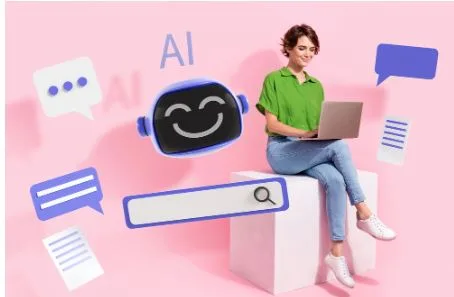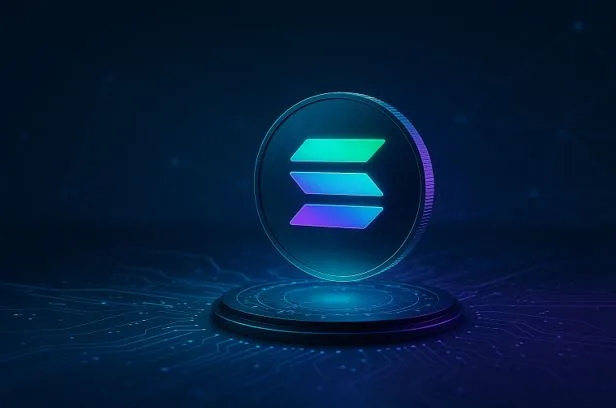How to Use AI to Be More Productive: 6 Smart Strategies
AI is not a magical productivity wand, but it’s one of the few tools that can amplify both thinking speed and decision quality when applied with intent. It removes the burden of repetitive cognitive tasks, such as filtering through raw data, reformatting content, or switching mental contexts. The trick isn’t to use more AI but to identify exactly where in your personal or professional workflow AI can step in to handle energy-draining tasks.
Because AI can adapt to nearly any domain, from academia to sales and business research, you can optimize processes that traditionally eat up hours with results barely visible on the horizon. AI provides a precision layer that fits into any workflow, but how can you boost your productivity with AI professionally and personally? Let’s find out together.
3 ways to enhance your productivity with an AI-first approach
#1 – Transform content creation
AI is capable of doing much more than generating text. It is also surprisingly adept at restructuring existing content without sacrificing nuance. You can, for instance, shift tone, complexity, and formats to suit the exact target audience—whether that’s converting technical documentation into easy-to-grasp guides or turning raw notes into comprehensive listicles.
Additionally, it can act as a context bridge, pulling from multiple sources you’ve already created to produce new outputs. This way, artificial intelligence helps you increase productivity by reducing creative bottlenecks common when these tasks are started from scratch. Most importantly, it goes beyond generating text-based copies, product descriptions, and email follow-ups.
AI-powered image generators have become irreplaceable tools for businesses, improving visual appeal and making content more engaging and compelling. The AI Image Generator by DepositPhotos.com is one of those tools that brings aesthetics to any publication. With prompt inspiration and a series of generated visuals based on the query, you can rest assured that the image effectively translates your brand values and enhances productivity. Use the generated image as is, or take advantage of the AI-powered features DepositPhotos offers. From the upscaling option to the background remover and object replacer, there’s no task DepositPhotos can’t deliver.
#2 – Structure tasks dynamically
In scenarios where priorities, time constraints, and task dependencies shift frequently, AI can be an efficient assistant and boost productivity in your business. Instead of keeping a static to-do list that’s outdated by lunchtime, you can use AI to break down large goals into smaller tasks ordered according to urgency, load, and available resources at the given moment. This helps you re-prioritize and deliver what is required within the timeframe that’s left. Just keep in mind that the level of precision depends on how well AI knows your workflows, tasks, and deadlines.
The great thing about AI is that it can silently monitor communication channels, meetings, and shared documents, tracking often forgotten decisions and follow-ups. This approach reduces delays caused by miscommunication and overlooked action items, aligning you and your team without constant status checks.
#3 – Reinforce your professional skillset
Let’s face it: staying objective when assessing your progress with a skill is quite challenging. Luckily, AI can track ongoing performance and detect weak spots or recurring mistakes across various tasks, providing targeted micro-exercises or resources to address these areas efficiently. This way, you can reduce skill gaps and focus on eliminating weak links.
Studies confirm that well-designed AI guidance can outpace traditional learning. In one randomized trial, AI-tutored students witnessed increased productivity and motivation, absorbing more than twice the content in less time than peers in active-learning settings. This shows that minute corrections and tailored drills improve real work.
3 ideas to improve efficiency using AI in daily activities
#1 – Reflect through journaling and planning
AI can identify emotional patterns, recurring challenges, and connections between overall efficiency and vital aspects such as sleep quality, physical activity, and food intake. This insight empowers more mindful decision-making while giving you a heads-up on things to pay attention to, double down on, or omit.
Use AI to suggest specific changes to daily routines, like boosting sleep quality by adjusting your hours or adding breaks and breathing exercises when stress peaks. Turning to journaling might feel unnatural at first, but once you create a habit of writing, reflecting, and refining, it becomes a powerful self-improvement tool.
Recent research confirms the measurable benefits of AI-guided journaling. An 8-week study explored AI-integrated journaling with behavioral sensing (tracking sleep, location, and activity). Participants reported a 7% increase in positive affect, an 11% reduction in negative affect, and decreased anxiety and depression symptoms—demonstrating that AI can make self-reflection both actionable and impactful.
#2 – Try leisure scheduling
It’s impossible to be in constant motion, spending every single minute actively. There has to be time to take a breather in the middle of your workday or once you clock off. But if you’re the type of person who thrives on activities, having too many unused pockets of time can be mentally tough. Thankfully, AI can help scan and match the best time slots with leisure activities that fit your mood, location, and resources.
Once AI knows your routine, preferences, and other parameters, it can suggest creative or wellness activities you like but tend to skip. This helps you build effective active-rest strategies, striking a perfect balance that lets you unwind and recharge.
#3 – Maintain skills efficiently
It’s crucial to apply skills so they don’t fade after initial learning—whether playing a musical instrument or practicing handstands. AI can schedule timely refreshers, reminders, and challenges to keep your abilities sharp, ensuring steady retention without overloading your calendar. The best part is you don’t need to sign up for any AI course to boost productivity and maintain your existing skills. Mindful, occasional practice with AI-generated suggestions is enough to encourage sustainable growth.
FAQ: How can I boost my productivity with a minimal AI toolstack?
Depending on your needs, you might require a personalized AI-powered toolstack, so focus on a lean setup that covers core essentials without overwhelming you. If your work is writing-related, use AI for content tasks, time management, and data summarization. The good thing is that a single AI-powered tool can increase productivity—whether it’s ChatGPT, Gemini, or Claude—each offers unique advantages.
Conclusion
Productivity—professional or personal—hinges on selectively deploying your energy where it matters most. These AI-first ideas to improve productivity aren’t shortcuts but precision tools that handle the mundane, clarify the complex, and elevate your capacity for focus, growth, and creativity. Use them to transform invisible friction into opportunity, reclaim the hours often lost to low-value work, and free your mind for what you can do best.




